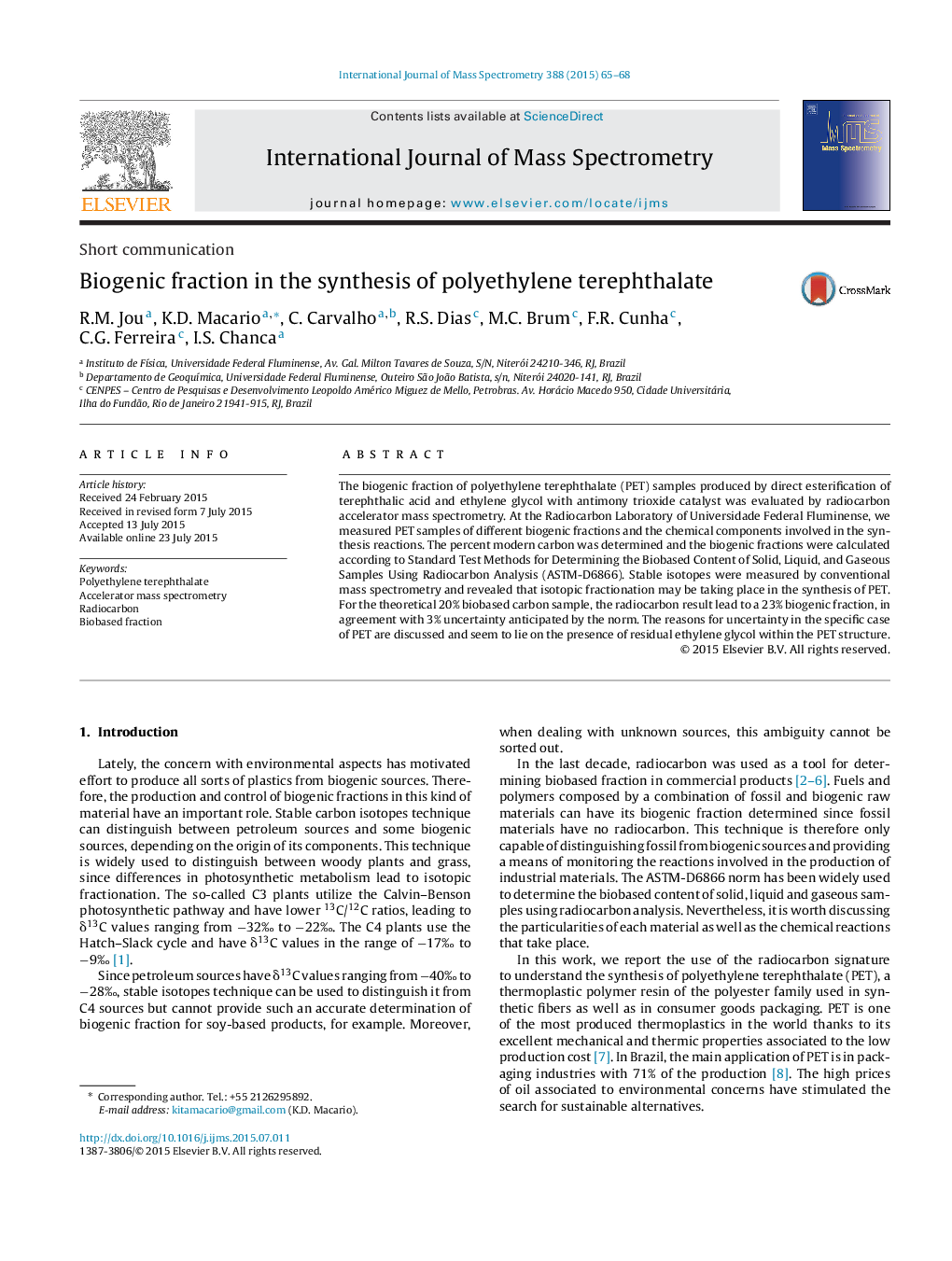| Article ID | Journal | Published Year | Pages | File Type |
|---|---|---|---|---|
| 1192373 | International Journal of Mass Spectrometry | 2015 | 4 Pages |
•The present work is the first research on polymer biogenic fractions analysis completely performed in Brazil.•The biogenic fraction of polyethylene terephthalate (PET) samples produced by direct esterification of terephthalic acid and ethylene glycol with antimony trioxide catalyst was evaluated by radiocarbon accelerator mass spectrometry.•The PET biogenic fractions estimated on the basis of the ASTM-D6866 were 99% and 23%, for the 100% and 20% biogenic carbon compounds, respectively.•Although isotopic fractionation during the synthesis of PET could be identified from IRMS δ13C results, such effect has no influence on the final biogenic carbon fractions, as the measured 14C values have been corrected by AMS δ13C.•For the theoretical 20% biogenic carbon PET, the slightly higher values could be related to the presence of poly(diethylene glycol terephthalate) (PDEGT) as a coproduct of PET, what could represent a concern since its presence can affect the quality of the produced material.
The biogenic fraction of polyethylene terephthalate (PET) samples produced by direct esterification of terephthalic acid and ethylene glycol with antimony trioxide catalyst was evaluated by radiocarbon accelerator mass spectrometry. At the Radiocarbon Laboratory of Universidade Federal Fluminense, we measured PET samples of different biogenic fractions and the chemical components involved in the synthesis reactions. The percent modern carbon was determined and the biogenic fractions were calculated according to Standard Test Methods for Determining the Biobased Content of Solid, Liquid, and Gaseous Samples Using Radiocarbon Analysis (ASTM-D6866). Stable isotopes were measured by conventional mass spectrometry and revealed that isotopic fractionation may be taking place in the synthesis of PET. For the theoretical 20% biobased carbon sample, the radiocarbon result lead to a 23% biogenic fraction, in agreement with 3% uncertainty anticipated by the norm. The reasons for uncertainty in the specific case of PET are discussed and seem to lie on the presence of residual ethylene glycol within the PET structure.
Graphical abstractFigure optionsDownload full-size imageDownload high-quality image (128 K)Download as PowerPoint slide
